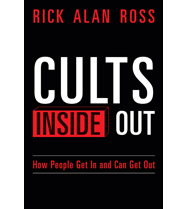What It Feels Like to Leave the Mormon Church
Published By admin
My family have been members of the Church of Jesus Christ of Latter-Day Saints since 1850, when my great-great-grandfather became our first Mormon convert and made the journey to Utah. Seven generations later, I was born in Colorado. My parents had planned to move to Utah after my father finished dental school, but my grandfather, already established there as a dentist himself, advised against it. “Too many dentists here,” he said. So they stayed in Colorado, an eight-hour drive from the place that held our family’s heart.
Every summer and Christmas meant pilgrimages to Utah. These weren’t just family visits—they were spiritual homecomings, reminders of where we came from and who we were meant to be. I loved those trips, playing with cousins who shared my faith, feeling connected to something larger than myself.
I am the youngest of four, and by the time I reached adulthood, the path seemed clear: serve a mission, serve the church, live my faith. Two of my older siblings had already served their missions, and I was excited to follow. The Mormon church operates on lay ministry—ordinary members “called” to leadership positions—and my parents had always answered those calls, serving in various roles. Church wasn’t merely what we did on Sundays; it was who we were.
There was one complication: I am gay.
The Mormon church’s position on homosexuality is slightly more nuanced than people may realise. Having same-gender attraction isn’t, in itself, considered sinful. A common term used by Mormons is worthiness, and while they never use the term unworthy, there are some acts that designate a constituent unworthy. One of those? Gay sex. Be as gay as you’d like, but remaining in the church means remaining celibate. Forever.
When I turned 18 and sat down with my bishop to discuss mission plans, I was honest about both being gay and about looking at pornography and masturbating, behaviours that required a period of repentance before serving a mission. I couldn’t go three months without one or the other, in part because I was grappling with feelings I didn’t understand and that had no healthy outlet.
The bishop and I decided I should wait until I had better control over my thoughts and actions. Instead of serving a mission, I enrolled in Brigham Young University–Hawaii, then transferred to BYU–Idaho. I spent several years trying to find a way to be both gay and Mormon. For a while, I found balance. I served in leadership positions—elder’s quorum, bishop’s secretary, choir director.
The church, to its credit, provided confidential spaces where I could discuss my struggles. When I had “slip-ups”—pornography or masturbation—I would confess, step back from my church duties for a few weeks of repentance, then return to full participation. (This chastisement was meted out for any individual dabbling in sexual activity or masturbation, regardless of sexual orientation.) This cycle became familiar, even comfortable in its own way.
By 21, I discovered online communities of gay Mormons navigating the same challenges. Finally, I felt understood. Through one of these online groups, I met someone who lived in another state. We planned a visit—just for lunch, just a conversation with two people who understand each other. We ended up kissing in my car. Suddenly, everything I thought I knew about my future shifted. Maybe I didn’t have to be alone forever.
This led to intense internal conflict. At 24, I began a virtual relationship with another gay Mormon man. We never met in person, but we were emotionally intimate and sexted often. I was unprepared for the complexity of wanting things that seemed mutually exclusive: to be faithful to my religion and to experience love.
Content retrieved from: https://www.esquire.com/uk/life/a65412668/what-it-feels-like-to-leave-the-mormon-church/.






